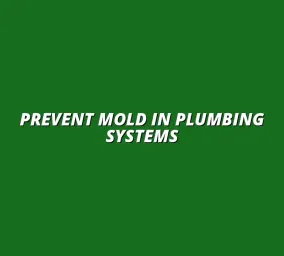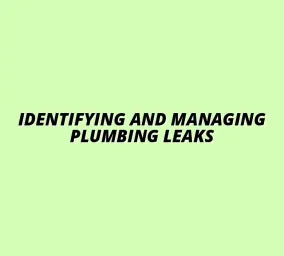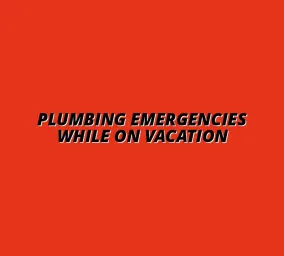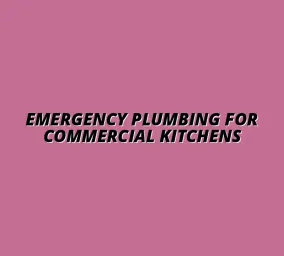Frozen Pipe Plumbing Tips
Understanding the Risks of Frozen Pipes During Winter
When winter sets in, many homeowners face the risk of frozen pipes. This can lead to serious plumbing issues, including burst pipes that can cause extensive water damage. Understanding how and why pipes freeze is crucial for preventing headaches and costly repairs later on!
The freezing of pipes occurs primarily when the temperature drops significantly, and this can affect various parts of your plumbing system. It’s important to recognize the signs and causes early on to protect your home from the harsh winter elements. For helpful tips on preventing frozen pipes this winter, check out this guide: Prevent Frozen Pipes This Winter.
Why Frozen Pipes Occur in Cold Weather
Frozen pipes are a common problem during the cold months. When temperatures drop to 32 degrees Fahrenheit (0 degrees Celsius), water inside the pipes can freeze, expanding and creating pressure that can lead to cracks or breaks. This is especially true for pipes that are exposed to the cold, such as those in unheated areas of the house.
Several factors contribute to the likelihood of pipe freezing. When the insulation is inadequate or when there are significant drafts, these conditions can make pipes vulnerable to freezing. In addition, if plumbing is located in exterior walls or unconditioned spaces, the risk increases dramatically. Learn more about winter plumbing tips to prevent freezing with this helpful resource: Winter Plumbing Tips to Prevent Freezing.
Common Causes of Pipe Freezing
- Inadequate insulation around pipes.
- Cold drafts entering through windows and doors.
- Unheated areas such as crawl spaces or attics.
- Low outdoor temperatures, especially at night.
Being aware of these common causes can help you take preventative measures before the cold weather strikes. It's essential to regularly check vulnerable areas and ensure that your plumbing is adequately protected.
Impact of Temperature on Plumbing Systems
The temperature has a profound impact on plumbing systems, particularly during the winter months. As temperatures drop, the risk of freezing increases, and this can lead to not only frozen pipes but also other plumbing concerns. For instance, when water freezes and expands, it may cause joints and fittings to break, leading to leaks when thawing occurs. Preventing pipe corrosion is also crucial; here are some helpful tips: Preventing Pipe Corrosion: Helpful Tips.
Even a slight drop in temperature can have a significant effect. For instance, temperatures consistently below freezing can mean that pipes may freeze overnight, especially if they are poorly insulated. Understanding how temperature fluctuations affect your plumbing will help you mitigate risks.
Signs of Frozen Pipes to Look Out For
Identifying the signs of frozen pipes early is key to preventing severe plumbing issues. Knowing what to look for can save you from costly repairs and water damage. Here are some common indicators that you may have frozen pipes.
Unusual Water Flow and Pressure Issues
- Low or no water flow when taps are turned on.
- Intermittent pressure spikes when using water.
- Frosty water from the tap or unusual odors.
If you notice any of these issues, it’s important to investigate further to determine if your pipes are frozen. Addressing these problems quickly can help prevent more serious complications. Learn how to stop pipe leaks from getting worse here: Stop Pipe Leaks From Getting Worse.
Frost on Pipes and Temperature Changes
Another clear sign of frozen pipes is the presence of frost or ice on the exterior of your plumbing. If you see frost forming, it indicates that the water inside is at risk of freezing as well. Additionally, if pipes feel unusually cold to the touch, this can be another warning sign.
Changes in temperature within your home, especially in unheated areas, can also signal potential freezing. Keeping an eye on your plumbing can help you catch these problems before they escalate into more serious issues!
Addressing Common Questions About Frozen Pipes
Frozen pipes can lead to serious plumbing issues, but having a plan can make all the difference. When faced with a burst pipe or other emergencies, knowing what to do immediately is crucial. Let’s tackle some of the most common questions homeowners have about dealing with frozen pipes. For winter bathroom plumbing leak prevention, see this guide: Winter Bathroom Plumbing Leak Prevention.
If a pipe does burst, quick action can minimize damage. Understanding emergency shut-off procedures is essential in these situations to protect your home and wallet from costly repairs!
What to Do If a Pipe Bursts After Freezing?
When a pipe bursts, your first step should be to stop the flow of water to prevent flooding. Locate the main shut-off valve in your home and turn it off. This action will halt further water damage while you assess the situation!
Once the water is shut off, it’s important to check for any visible leaks, and start cleaning up any standing water to avoid mold growth. Here’s a quick list to follow:
- Turn off the main water supply.
- Identify the burst pipe and assess the damage.
- Drain faucets and toilets to empty remaining water.
- Contact a professional plumber if the damage is extensive. For emergency plumbing services in your area, consider checking out local plumbing services online. Plumber in Driffold, Birmingham is one example.
Emergency Shut-Off Procedures for Plumbing
Knowing how to shut off your plumbing in an emergency can be a lifesaver. Here’s how to do it safely:
- Locate your main water shut-off valve; it’s usually near your water meter.
- Turn the valve clockwise to stop the water flow.
- Make sure everyone in your household knows how to do this!
When to Call a Professional Plumber
Not every plumbing issue can be fixed with DIY methods. If you’re unsure about the extent of the damage or how to proceed, it may be time to call in the professionals. Watch for these signs:
- Multiple pipes are affected.
- Visible water damage on walls or ceilings.
- Unusual odors indicating mold or mildew.
- You are not comfortable with DIY repairs.
How to Prevent Pipes from Freezing in Unheated Spaces
Preventing frozen pipes is just as important as knowing how to deal with them. Unheated spaces like garages and attics are particularly vulnerable during winter months. Let’s explore some effective heating techniques to keep those pipes cozy! Maintaining your water heater properly can also prevent freezing: Prevent Water Heater Freezing This Winter.
Getting ahead of the problem is key. Here are some simple and effective strategies:
- Install heating cables on vulnerable pipes.
- Use space heaters in unheated areas, but monitor them closely.
- Keep cabinet doors open to allow warm air to circulate around plumbing.
Effective Heating Techniques for Vulnerable Areas
Ensuring that your pipes stay warm can help prevent freezing. Here are a few heating methods you can utilize:
- Insulate pipes with foam or fiberglass sleeves.
- Seal any drafts in doors and windows near plumbing.
- Consider installing a thermostat-controlled heater in colder areas.
Importance of Draining Water from Outdoor Faucets
One of the simplest ways to prevent freezing is to drain your outdoor faucets before winter. Follow these steps:
- Shut off the water supply to the outdoor faucets.
- Drain the water from each faucet by turning it on.
- Remove any hoses and store them away for the winter.
This simple task can save you a lot of stress and potential damage down the line!
Final Thoughts on Emergency Plumbing Tips for Frozen Pipes
Frozen pipes can pose significant risks, but being prepared and informed can help you tackle any issues head-on. Remember, preparation is key. Regular maintenance and awareness of your plumbing system can prevent future emergencies!
Summarizing Key Takeaways for Homeowners
To summarize, here are the most important things to remember as a homeowner:
- Know how to shut off the main water supply!
- Inspect your pipes regularly, especially before winter.
- Take preventive measures in unheated spaces.
- Don’t hesitate to call a plumber when needed.
Importance of Preparation and Awareness
Staying aware of your plumbing system can help you react faster when issues arise. Preparation isn’t just about fixing problems; it’s about preventing them from occurring in the first place. Keep your home safe and warm during winter!
Encouraging Regular Plumbing Inspections and Maintenance
Regular inspections can catch potential issues before they become emergencies. Schedule maintenance checks with a plumbing professional to keep everything in top shape. It’s a small effort for peace of mind!
Resources for Further Assistance
If you ever find yourself in need of additional help, don’t hesitate to seek out resources. Here are some valuable tools:
Links to Local Plumbing Services
Look for reputable plumbing services in your area. Websites typically offer customer reviews and rates to help you make an informed choice.
Additional Reading on Home Winterization Techniques
There are plenty of guides available online that provide tips on winterizing your home. Taking the time to read up on these can be incredibly beneficial!






